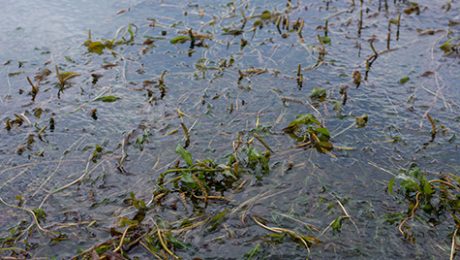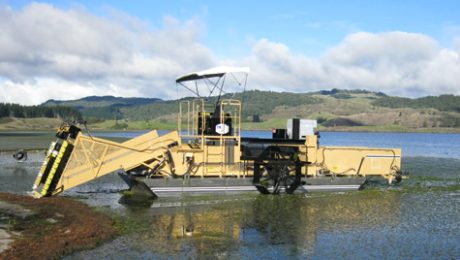Stay informed with the latest news and updates on waterway management, aquatic plant control, water quality, pollution, and environmental issues. Our News category covers a wide range of water-related topics, from innovations and research to local and global waterway developments.
Residents around Indian Lake in Worcester, Massachusetts, are raising concerns after a spike in fish deaths following the recent application of aquatic herbicides. These chemicals, intended to control the spread of invasive weeds, work by killing the plants outright. But once the plants die, they begin to decompose in the water—a process that consumes dissolved
Following a chemical treatment aimed at controlling aquatic vegetation in Port St. Lucie’s Elkhorn Canal, residents reported what they called the “worst smell in the entire world” as countless fish perished on the canal’s surface. Water tests revealed that dissolved oxygen levels plunged to levels unsustainable for aquatic life—an unintended but severe consequence of the
Hydrilla, a non-native aquatic plant, has been labeled one of the world’s most invasive species. While it can dominate shallow, warm waters in places like Florida, its threat in deep, cold lakes such as those in New York is far less clear. Nevertheless, aggressive chemical eradication campaigns have been launched across the state, including in
Flint Lake, located on the north side of Valparaiso, Indiana, is facing serious challenges from invasive aquatic weeds—particularly Eurasian milfoil. This fast-spreading species is contributing to significant fish habitat destruction. The infestation has become so severe that during a Department of Natural Resources (DNR) fish survey, biologists had to repeatedly stop to clear plant material
Water hyacinth is often seen as a serious problem in lakes and rivers around the world. The fast-growing invasive plant can clog waterways, block sunlight, reduce oxygen levels, and harm native wildlife. Managing large infestations is difficult and expensive, especially in tropical and subtropical regions where the plant spreads quickly. Now, researchers are exploring whether
At first glance, using herbicides to control aquatic weeds might seem like an efficient solution. But emerging science shows that these chemicals often come with serious unintended consequences for the environment. A recent report from Beyond Pesticides reveals that a new class of herbicides containing florpyrauxifen-benzyl (FPX) —designed to mimic natural hormones—may be threatening non-target
The article “The Most Vulnerable Fish Species in U.S. Rivers Today” highlights several fish species facing significant threats in American rivers due to factors such as habitat destruction, pollution, climate change, and invasive species. Key species discussed include: American Eel: Once abundant in eastern U.S. rivers, their populations have declined due to migration barriers like
A unique weed harvesting machine, described by its skipper as something out of Waterworld, is helping restore Lake Horowhenua (Punahau). The contraption, part boat and part tractor, moves slowly across the lake, using paddle steamer-like wheels and sharp teeth to cut and collect up to ten tonnes of aquatic weeds daily. Built in the U.S.
A ballasted wake-enhanced boat creates a dangerous situation as a child playing on the shoreline screams in terror as massive waves approach. While the proponents claim that wake-enhanced watercraft can safely operate on Wisconsin lakes, this video tells another story. You don’t need to read a scientific paper to see the safety hazards these unnatural
Milwaukee, a city steeped in history and industry, is emerging as a global leader in addressing one of humanity’s most pressing challenges: water. As the world faces growing concerns over water scarcity, contamination, and climate resilience, Milwaukee has positioned itself at the forefront of innovative solutions. Through strategic investments, world-class institutions, and a commitment to









